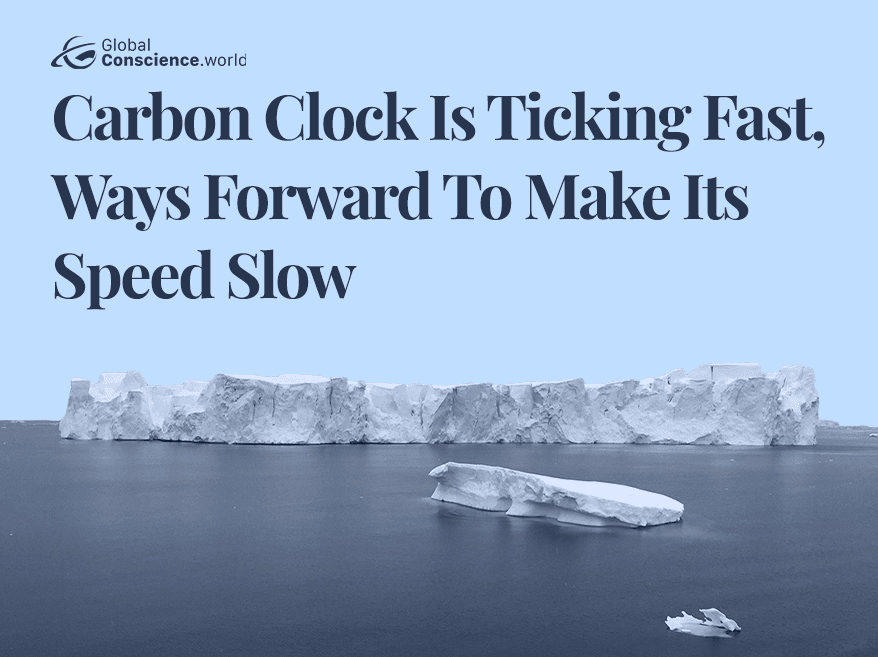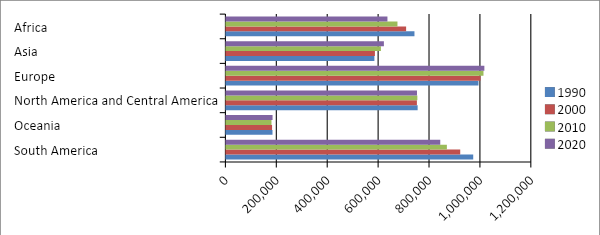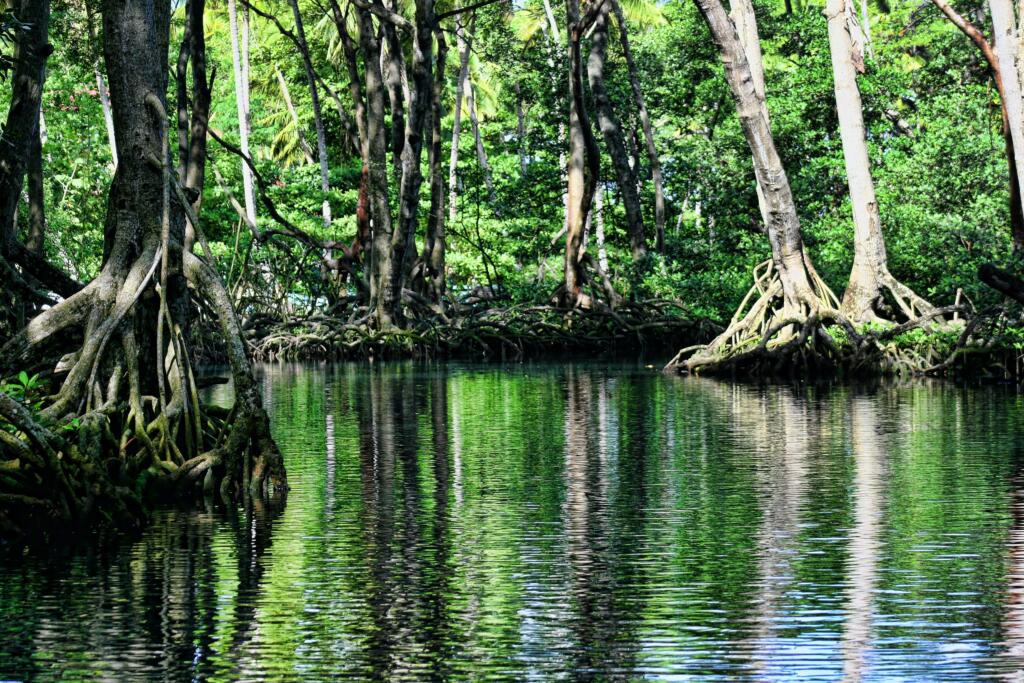Carbon Clock Is Ticking Fast, Ways Forward To Make Its Speed Slow

Carbon dioxide and oxygen are necessary to augment and integrate life on earth because it is the basic building block of life. Every living organism on earth requires it, however, currently; the world has overwhelmed the percentage of carbon dioxide. This is the reason why the carbon clock is ticking fast and harbingering great danger soon, because the remaining carbon budget of the world is continuously depleting at the fastest rate ever. Today we have only 25 years, 8 months and 4 days left to reach the 2 degree Celsius target (27 august, 2021 by MCC). The IPCC report (2021) explored that the world has already reached 1.5 degrees of temperature. Since 2005 each summer across the globe is following the extreme heat waves which are on an incessant rise, and the world is seeing more frequent flooding in Europe, Asia, and America. Further, the annual rate of precipitation has observed an unprecedented increase; central East Asia and African countries are more prone to such calamities. According to geoscientists, the atmosphere of the earth cannot absorb more than 400 gigatonnes (GT) of carbon dioxide. Therefore, to maintain a 1.5-degree threshold level, we need to keep the carbon level only up to 42.2 gigatonnes (GT) per year, which is equivalent to 1337 tons per second of carbon emission. It is being projected that by the year 2050 the currently available budget of carbon which is 1170 gigatonnes will be exhausted to stay on a 2 degree Celsius threshold level. The clock is constantly harbingering that little time is left to make the world livable. Not only human beings, but the oceanic life, flora, and fauna existence on earth is in great danger. The notable point is this carbon clock only reveals about the carbon budget and it does take into account other greenhouse gasses remaining budget.
We need to learn first the types of carbon:
There are various kinds of carbon dioxide types, which include blue carbon, brown carbon, green carbon, and black carbon. However, the most important carbon is blue carbon which has the potential to control further carbon emission into the atmosphere and make the earth livable for living beings. So the question arises what is blue carbon?
Photo credit is to : Joel de la cruz at Pexels
Blue carbon is simply the term for carbon captured by the World Ocean and coastal ecosystem. Coastal areas vegetation, seagrass, marshes, provide a natural way to reduce the effects of greenhouse gasses on earth atmosphere through sequestration of the carbon emission at a much faster rate than any other natural carbon sinkhole. In epitome, blue carbon sinkholes can play a significant role to ameliorate the situation of carbon budgeting significantly. For thousands of years oceans have served as a natural carbon sink, although the coastal ecosystem is smaller in size than terrestrial plants, it takes most of the world’s carbon underneath to its surface; we may not see it yet. Nevertheless, carbon emission is stored there in thousands of metric tons.
United nation climate conference at Bali (unfccc cop 13, 2007), had for the first time realized the importance of types of carbon and divided them into different categories. Given the distinction, green carbon and brown carbon are emitted by terrestrial forests and monoculture plantations. Since the United Nations conference, each IPCC report emphasized more forestation. The carbon dioxide which is exhausted by natural shrubs and vegetation in the natural and manmade forest is called green carbon. Whereas brown carbon is emitted by the industrialized trees which are used for monoculture plantation: rubber trees, wood pulp, cacao, palm oil trees, and many other trees which are solely grown for industrial purposes in different parts of the world. Monoculture plantation is not an absolute sinkhole for carbon emission as natural forests are more resilient to climate change. Natural forests provide more and extensive sinkholes to environmental disturbances compared to monoculture plantations, because their genetics, taxonomy, and functional biodiversity can absorb carbon dioxide from the environment around them. Natural shrubs and vegetation regeneration are more resistant after a fire due to extreme weather conditions, from pest and disease attacks. Further, a uniform forest population is more tolerant to change in geospatial conditions like changes in temperature, rainfall patterns, humidity, and sunshine; because its taxonomic structure varies according to the seasonal changes naturally. So it can be concluded that green carbon sinkholes are more beneficial than brown carbon because industrialized trees lost their genetic diversity, thereby, successively such kinds of trees are not resilient to bear the pest attacks and variation in climatic patterns. In today’s world the Australian forest has the largest carbon stock in the world. Particularly eucalyptus regnans and acacia sap have high levels of carbon dioxide.
Black carbon is generated due to the combustion of fossil fuels and it is the worst kind of carbon emission. We know that terrestrial forests are the second biggest sinkhole of carbon emission, the given below statistical graph no: 2 of FAO depicts what is the current situation of forest vegetation in the world.
Forest Growth Rate by Region of the World from 1990 to 2020

Sources: World food and agriculture organization, FAO statistics 2021. www.fao.com
Overall World’s Growth Rate from 1990 to 2020

Sources: World food and agriculture organization, FAO statistics 2021. www.fao.com
We can see in the above-mentioned graphs that with time growth in the natural and uniform population of forest has decreased substantially not only on a regional level but overall at the world level. Particularly since 2006, every IPCC report identified the issue eminently.
A way forward to slow down the fastest-growing carbon clock:
The time has approached to take more intensive measures to control the carbon emission in the world. Indeed industrialization and urbanization are the two major factors that are intriguing the problem. So, currently, all of the IPCC (international panel of climate change) reporting measures need to be readdressed. There must be new and tightened standards of reporting carbon emission which is currently five but these need to be increased up to a higher possible level.
Although there are so many methods to reduce the carbon emission rate into the atmosphere, such as by the integration and more preventive measures of coastal wetlands, by growing sea vegetation like mangroves and seagrass, there should be efficient marketing of these coastal plants. Aside from this, tidal marshes also provide a natural barrier to sea-level rise so there should be new rules and practices to keep the marshes intact for future climate resilience. For this reason, there is a need to take action on an immediate basis, because if the sea level continuously rises at a constant rate then this sea-level rise will cause great danger to salt marshes, and tidal marshes of the world by 2040 (natural communication, Rutgers today 2018 report). So, the situation can only be improved by designing more coastal-friendly marketing strategies which can offset the problem.
The second way to reduce carbon emission is to slow down the pace of urbanization phenomena. It will help to integrate the uniform population of the natural forest which needs to be restored and regenerate naturally. Monoculture activities cannot help much to reduce carbon emission, due to having less genetic biodiversity and weak taxonomic structure. In addition to all of these policies, the high tax rate on the combustion of fossil fuels such as on plastic manufacturing units, industrial emission, and manmade waste can also make the world a better place to live.
References:
https://www.mcc-berlin.net/en/index.html
https://www.sciencedaily.com/
www.fao.com.
www.cia.factbook.com
https://oceanservice.noaa.gov/welcome.html



